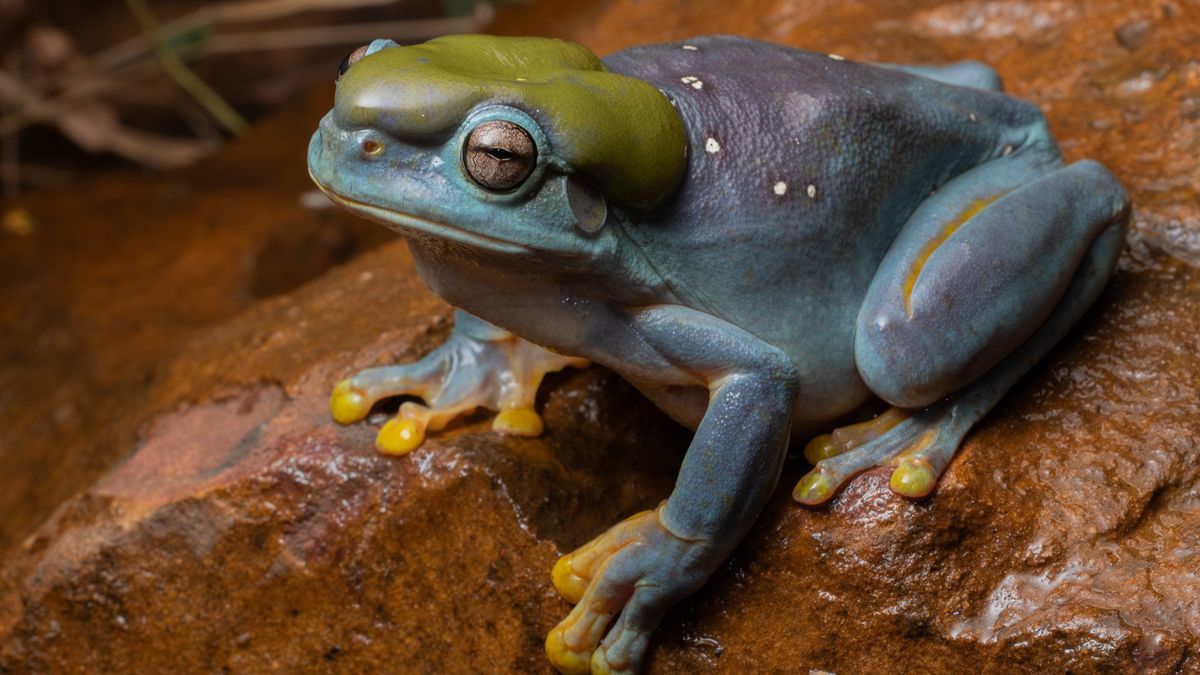Scientists in Australia have discovered a tree frog with bright blue skin instead of the usual green color, new pictures show.
The blue pigmentation is due to a rare genetic mutation, experts say.
Land managers in a wildlife sanctuary in Kimberley, Western Australia, spotted the mutant amphibian when it hopped into their workshop and sat on a bench gazing at them, ABC News reported Friday (July 12). Scientists later identified the animal as a magnificent tree frog (Litoria splendida).
The land managers sent pictures of the blue frog to Jake Barker, a conservation and ecology intern with the Australian Wildlife Conservancy (AWC). “Seeing the picture of the frog, it definitely elevated my heart rate,” Barker told ABC News. “It was so cool, it was a really exciting and special thing.”
Related: Paradoxical frog: The giant tadpole that turns into a little frog
Magnificent tree frogs are usually green with white spots on their backs, according to AWC. They grow to around 4 inches (10 centimeters) long and have a characteristic poison gland on the top of their heads. The poison tastes extremely bitter and serves as a defense mechanism against predators, such as larger amphibians, reptiles, birds and mammals.
The frogs can live for 20 years and inhabit areas of low rainfall across the northern Kimberley region and nearby Northern Territory.
This is the first time researchers have ever seen a blue-skinned magnificent tree frog, according to AWC. The mutant frog had an olive-green poison gland on its head, a few white spots on its back and yellow toe pads, the pictures showed.
Most frog species are green thanks to a combination of blue and yellow pigments in their skin, Barker told ABC News. The blue coloration in this individual was caused by a rare mutation called axanthism, where the yellow pigments are suppressed, he said.
“It’s just a lovely freak of nature,” Jodi Rowley, a herpetologist and curator of amphibian and reptile conservation biology at the Australian Museum, told Yahoo News.
Rowley has only ever seen one other blue frog in real life, possibly because these frogs are not well camouflaged in nature and get picked out by predators, she said. The newly discovered magnificent frog was 4.7 inches (12 cm) long, which is “really big” and indicates that “he’s a few years of age,” she said.
“It’s a very healthy frog,” Rowley said. “It’s definitely a showy frog. It’s one of the most beautiful frogs I’ve ever seen.”














/https://tf-cmsv2-smithsonianmag-media.s3.amazonaws.com/filer_public/d1/82/d18228f6-d319-4525-bb18-78b829f0791f/mammalevolution_web.jpg)






Discussion about this post